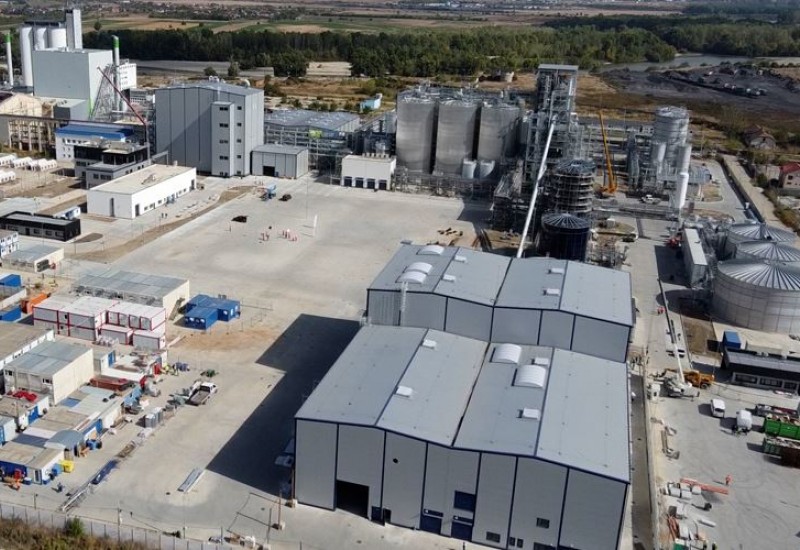Feature article - Navigating supply chain issues and financial stress in the current climate
Devi Shah and Fatema Begum of Mayer Brown International look at how companies can deal with insolvency or restructuring issues*
Companies are enduring a perfect storm of global supply chain-related disruption. Many industries are finding it difficult to navigate the current trading environment, particularly where they are party to supply chains that were already distressed as a consequence of the combined economic fallout of Brexit, COVID-19 and the war in Ukraine. These ‘once in a generation’ events have disrupted the normal flow of goods and caused supply shortages and extreme price fluctuation around the world.
As a result, businesses may now find it increasingly challenging to fulfil their contractual obligations. Contracts that may have previously been profitable are now likely to be marginal at best, or even loss-making, unless the increased costs can be passed onto the customer.
In a global marketplace, chemicals businesses are likely to have operations on a multinational level, including having a presence within the UK, whether through having operations based in the UK or through suppliers and/or customers up and down the supply chain operating within the UK jurisdiction. In addition, supply chain relationships that existed between Europe and the UK will now need to navigate that relationship in a post-Brexit regulatory environment.
UK regime
The UK regime is well equipped to assist chemical businesses caught up in dysfunctional supply chains with a wide range of legal tools. These range from long-standing insolvency and restructuring processes which continue to evolve, most recently with the introduction of the Corporate Insolvency and Governance Act 2020. There are also contractual remedies, such as:
* If prices of key component products are rising rapidly, price adjustment clauses can be used to pass on some of that additional cost to the customer
* If a supplier is refusing to supply, the customer can seek to enforce its contractual rights to require ongoing supply
* If a supplier refuses to supply unless payment above the contract price is made, the customer may agree the price increase under protest, with the option to recover the price increase via a subsequent claim for economic duress
* A customer may have the right to terminate for failure to supply
Alternatively, force majeure may be available in circumstances where a supplier is unable to supply its customer due to events outside of its control, such as the impact of sanctions, as a means of suspending its contractual obligations to supply. Where manufacturers and other businesses are experiencing cash constraints or are facing potential insolvency, they may delay payment of their suppliers to manage their cash flow. Many supply chain contracts are likely to have provisions allowing a party to terminate the arrangement on a payment default and/or the occurrence of specified insolvency events.
However, since June 2020 certain termination provisions are unenforceable. The restrictions only affect the ability of suppliers to terminate when their counterparty has become subject to a UK insolvency proceeding. They also only apply to suppliers of goods and services.
Supply contracts might also include retention of title provisions, which, at its simplest, provides for the title in the goods to remain with the supplier until the counterparty pays in full for the goods received. A failure to pay or an insolvency filing may cause the supplier to demand delivery up of the supplies.
Start of negotiations
Although many businesses may regard the taking of the various kinds of legal steps described above as being akin to pressing the nuclear button, in reality the use or threat of these remedies often has the effect of bringing parties back to the negotiating table, rather than initiating a formal dispute resolution process. In practice, in the absence of severe financial distress or insolvency, most supply chain disputes will be addressed by way of a commercial resolution.
It is, however, important to have regard for the legal steps, both offensive and defensive, that can be taken when a supply issue arises. Whichever step or combination of steps is ultimately taken, it is important to initiate communications with supply chain partners at an early stage once a potential problem is identified, and, where possible, to ensure that communications at a legal and commercial level are consistent both up and down the supply chain.
In situations where avenues for settlement have been exhausted and/or the business is suffering from severe financial distress, management should consider the various restructuring and insolvency options that are available. A common misconception is that restructuring or insolvency is the death knell for companies when, in reality, the various processes that exist can be used as a survival tool.
Whilst it is true that, where it is not feasible to continue business operations, the processes can be used to wind down a business in an orderly fashion, the majority of the formal restructuring tools in the UK have been developed to rescue a business as a going concern, with limited impact on critical suppliers and customers. Ultimately, such processes may equip directors with more control over the restructuring of their business, with a view to retaining value for all stakeholders.
Alternative ways out
A business which finds itself overleveraged, receiving pressure from creditors or experiencing turbulent trading, but which otherwise has a viable operational business, might consider using a scheme of arrangement, company voluntary arrangement or a restructuring plan to restructure its debts, for instance, by way of debt for equity swaps, an injection of new money, compromise of legacy debts and re-setting of future payment terms. Here, it is usually the company that proposes the compromise – although each class of affected creditors will need to vote in favour of the proposal - and so may retain a degree of control over what the restructured business might look like.
Whereas previously, a company would need to ensure that it had the majority votes from all affected classes of creditors to implement the arrangement, which could limit the scope of a restructuring, the newly introduced restructuring plan can be used where it does not have support from all the affected classes of creditors. Subject to certain conditions being satisfied, the dissenting creditors can be obliged to be bound by the terms of the plan. This is known as cross-class cram down.
Although the arrangements discussed above are binding, once approved, on the creditors or members it affects, the arrangements do not provide companies with the benefit of a moratorium which prevents any other third party from taking action against the company while the moratorium is in place. In order to allow a company successfully to implement an arrangement, it may require an interim stay on creditor action to allow it to promulgate and implement its reorganisation plan.
Compromise arrangements like the scheme or plan can be used in conjunction with some of the other restructuring tools available, such as administration – which does afford protection in the form of a statutory moratorium - or the standalone moratorium introduced recently under the Corporate Insolvency and Governance Act 2020.
The standalone moratorium can be a useful tool for a business which needs a short breathing space to organise its affairs and formulate a plan, but is otherwise able to make certain payments as they fall due. If the struggles it faces are more severe and it is unable to pay its debts as they fall due or will be unable to pay its debts as they fall due, the directors may decide that the business cannot continue as a going concern.
The board may then conclude that the best way to maximise value for creditors is for the business and assets to be sold via an administration process. Administration tends to be the most used insolvency process in the UK and it enables a potential purchaser to cherry pick assets and parts of the business.
Conclusion
Early engagement by companies which find themselves struggling is key as this not only means there are more options available, but also means there is more time to explore those various options, including the exercise of contractual rights, responding to, and resolving through negotiation any disputes. Where the business cannot continue as a going concern without a restructure, a controlled and well-planned restructuring or insolvency process produces a better outcome than an uncontrolled insolvency, and this is particularly true in a regulated industry such as the chemicals sector where the industry regulations and health and safety matters also need to be carefully managed and addressed.
Contact
Devi Shah
Partner in the Restructuring team
Mayer Brown International LLP
+44 20 3130 3669
www.mayerbrown.com
* - Also contributing to this article were Miles Robinson and Jonathan Cohen















